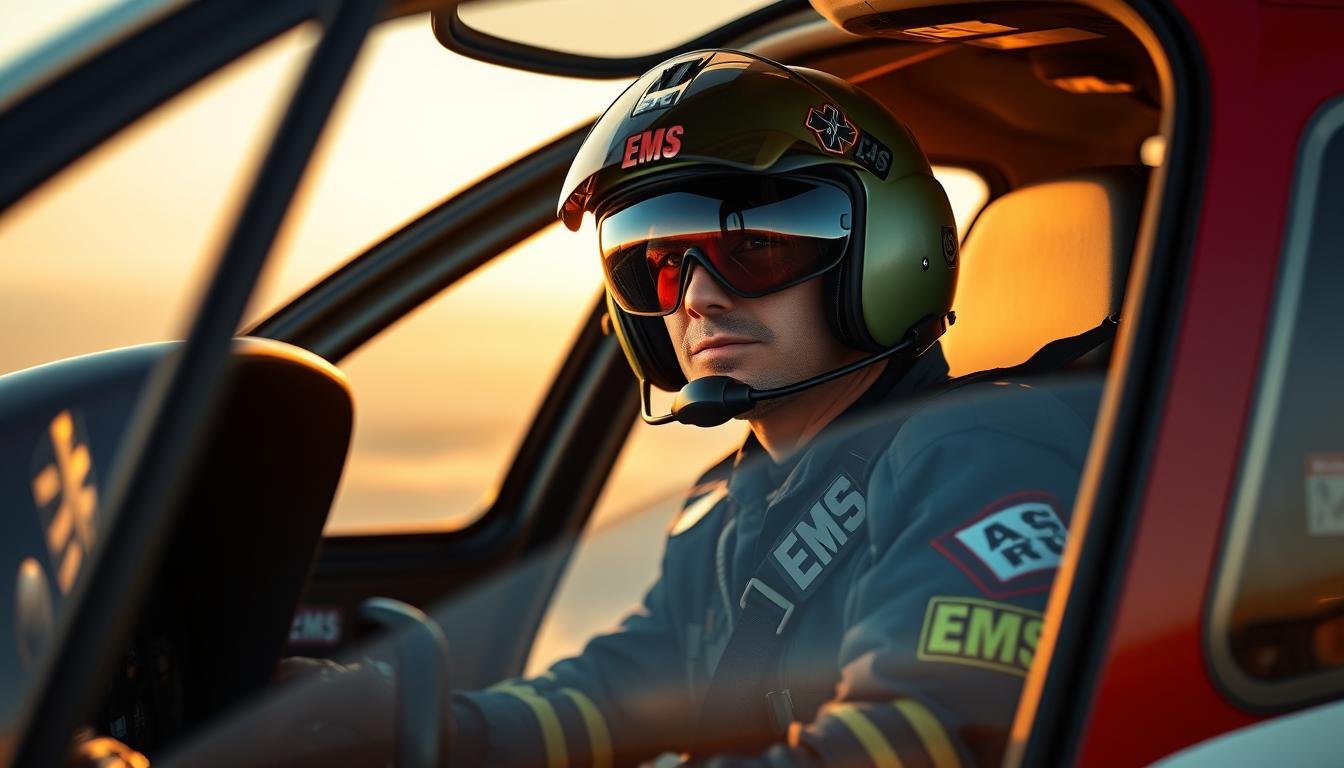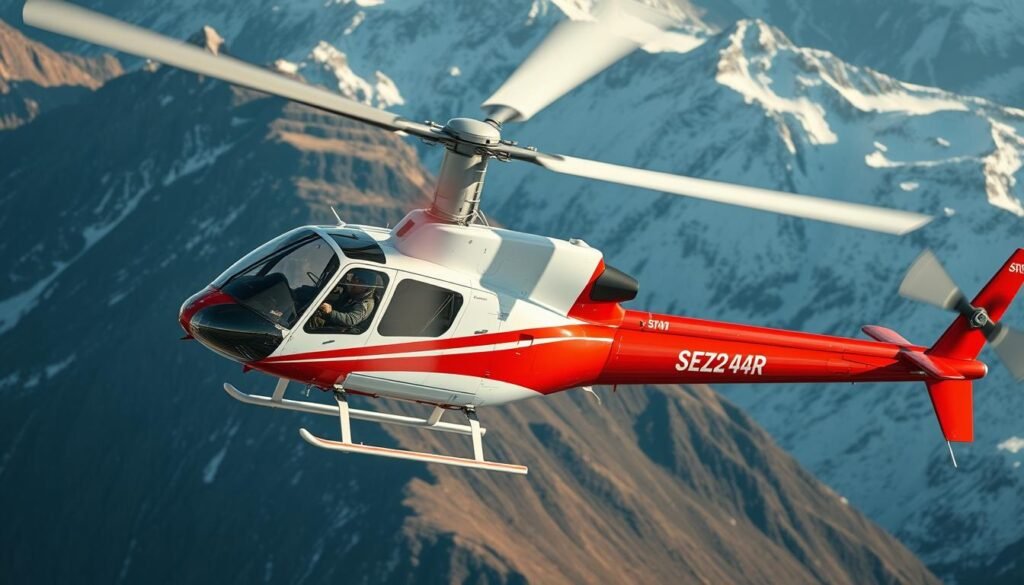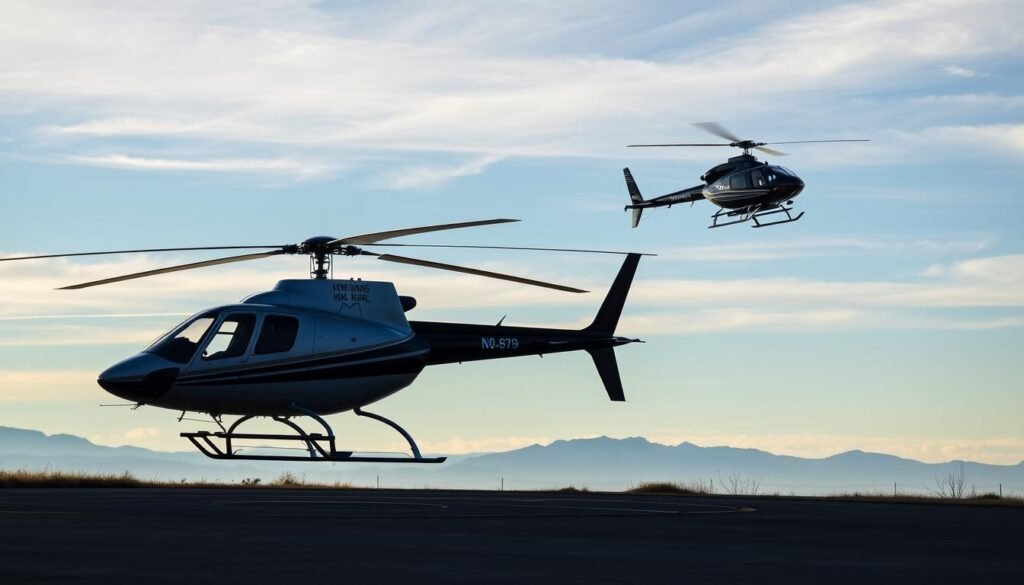Can a pilot build the precise mix of skills, experience, and medical readiness that emergency air ambulance work demands?
The path ahead is clear and demanding. It begins with private rotorcraft certification, adds an instrument rating, then a commercial certificate and focused hour building. Many candidates instruct as a CFI to log turbine and cross-country time that EMS operators prize.
Regulatory and medical currency matter. Most U.S. roles require a current FAA first- or second-class medical and IFR proficiency for rapid, night, and weather-challenged launches. Training costs and lifestyle trade-offs are real, but the mission rewards are profound.
Readers will find a step-by-step roadmap, realistic timelines (often 3–5 years to competitive experience), and notes on safety culture, crew coordination, and pay expectations. For a detailed training sequence and hour targets, see this step-by-step guide.
Key Takeaways
- Certifications: Private rotorcraft, instrument rating, then commercial certificate are core milestones.
- Medical: FAA first- or second-class clearance is mandatory for commercial EMS roles.
- Experience: Night, turbine, cross-country, and confined-area work matter more than raw hours.
- Timeline: Core ratings can take about a year; building EMS-ready experience often spans 3–5 years.
- Cost & Lifestyle: Training costs are sizable and on-call shifts demand flexibility.
What An EMS Helicopter Pilot Does And Why It Matters
Operating an air ambulance means balancing speed, safety, and teamwork on every call. The ems helicopter pilot must be ready to launch within 5–10 minutes, keep careful watch on weather, and run precise preflight checks.
Core Responsibilities In Emergency Medical Services
Daily duties include weight and balance calculations, aircraft inspections, and briefing with flight nurses and paramedics. Pilots manage patient loading procedures, maintain FAA compliance, and log mission documentation.
Operating In Challenging Weather Conditions And Terrain
Pilots evaluate weather conditions, density altitude, and obstacles before each sortie. They often land in confined zones—rooftops, roadside clearings, and uneven terrain—and make go/no-go calls that prioritize safety.
Safety, Regulations, And Coordination With Medical Teams
Coordination follows sterile cockpit discipline, clear radio calls, and standardized SOPs. Calm decision-making, crew resource management, and precise airmanship keep patients and crew safe.
“Flying in the Rockies means planning for sudden weather shifts, checking maintenance, and briefing with the medical crew before every launch.”
| Task | Typical Expectation | Why It Matters |
|---|---|---|
| Dispatch Readiness | Launch in 5–10 minutes | Reduces time to definitive care for patients |
| Preflight & Weight Checks | Completed before every flight | Ensures safe performance in varied conditions |
| Weather & Terrain Assessment | Continuous evaluation | Prevents accidents and informs go/no-go decisions |
| Crew Coordination | Sterile cockpit; clear briefings | Streamlines patient transfer and reduces errors |
Medical And Eligibility Requirements For EMS Helicopter Pilots
Medical fitness and clearances form the foundation of any emergency aircrew candidate. A current FAA medical certificate is mandatory; most operators ask for at least a second-class, and many prefer a first-class for competitive roles.
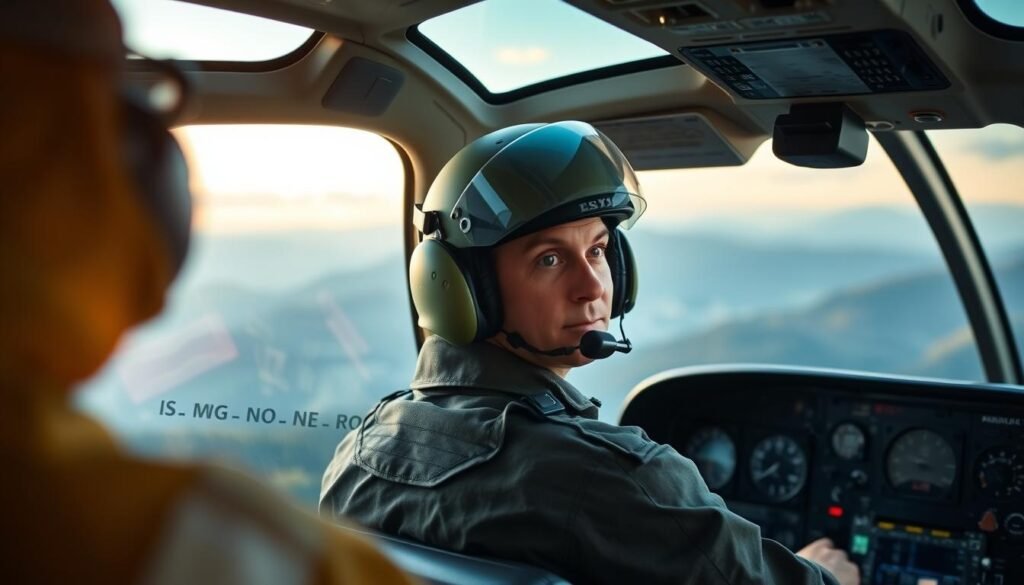
FAA First- Or Second-Class Medical Certificate Essentials
The Aviation Medical Examiner checks eyesight, color vision, hearing, blood pressure, cardiovascular health, and medical history. First-class privileges renew more often — every 12 months under 40, and every six months over 40. These intervals affect employability and currency.
Physical Fitness, Readiness, And Work Environment Pressures
Helicopter weight limits make fitness and weight management critical; many programs note a practical ceiling near 230 lbs in full uniform. Strength, coordination, and stamina matter for patient handling and confined-area operations.
Employers also value CPR/first aid credentials and aviation-related education such as an associate degree. Pilots face overnight shifts, rapid launches, and high decision pressure; rest, nutrition, and simple recovery routines support safe performance under stress.
“Maintaining medical currency is not paperwork — it’s part of keeping crew and patients safe.”
Step-By-Step: Licenses, Ratings, And Training To Become EMS
A structured sequence of licenses and ratings builds the foundation for safe air ambulance operations.
Private Helicopter Pilot: Ground School, Flight Training, And Checkride
Private pilot training combines ground school with dual and solo flight training. Part 141 programs list FAA minimums as low as 35 hours, but most students log 50–60 hours before the practical test.
Candidates must pass a written exam and a checkride that covers maneuvers, emergency procedures, and knowledge areas. Choosing a school that offers night and cross-country exposure speeds readiness.
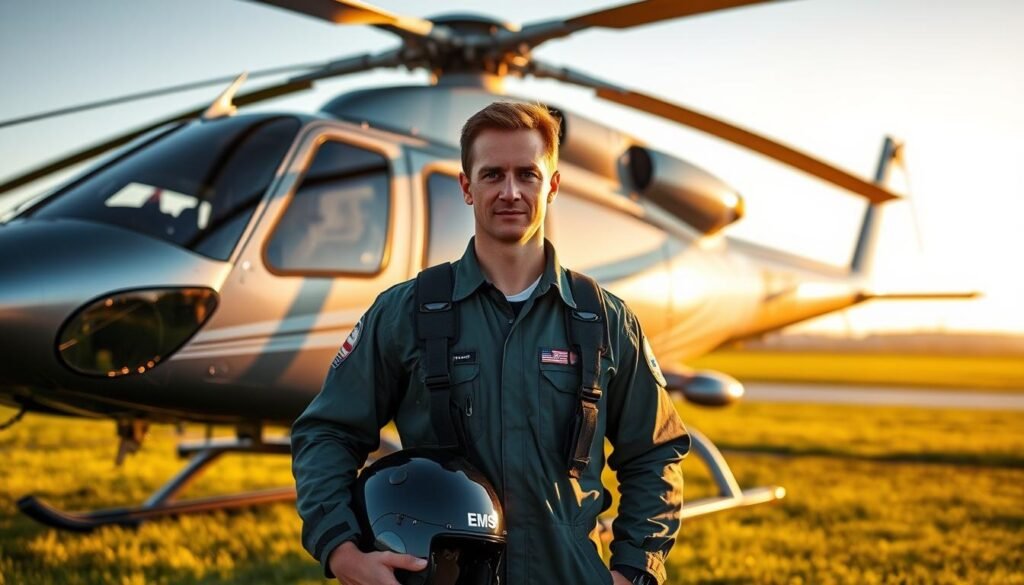
Instrument Rating: IFR Skills For Low-Visibility And Night Operations
Instrument instruction develops precision with instruments and procedures used in low visibility and night missions. Typical benchmarks include about 15 hours of instrument flight training and roughly 40 hours of instrument time.
Many programs expect 50 hours of cross-country flight before the instrument practical. These skills make ems helicopter missions safer in marginal weather.
Commercial Helicopter Pilot Certificate: Advanced Maneuvers And Standards
The commercial helicopter pilot certificate raises standards for performance and decision-making. Under Part 141, total hours are often near 115 with advanced maneuvers and emergency work.
Written and practical exams evaluate readiness for professional operations and client-facing responsibilities.
Projected Timeline And Training Path In The United States
A realistic timeline sees core ratings completed in about a year. Most pilots then spend 3–5 years building night, cross-country, and turbine-relevant experience before joining air ambulance crews.
Practical advice: verify Part 141 versus 61 options, select schools with varied weather exposure, and plan checkride scheduling to keep momentum through each step.
How to Become an EMS Helicopter Pilot: Building Flight Time And Turbine Experience
Accumulating purposeful flight time, not just hours, separates hireable candidates from casual applicants.
Start With Instructional Routes. Many pilots begin as a Certified Flight Instructor to log PIC time and sharpen cockpit discipline. Instruction builds decision skills, briefings, and steady hour accrual while keeping costs manageable.
Flight Time Strategies: From Flight Instructor To Commercial Roles
Combine instructing with commercial gigs such as tours or utility work. These roles add cross-country legs and confined-area practice that mirror mission tasks.
Turbine Time: Gaining Experience In Air Ambulance-Type Aircraft
Common turbine pathways are scenic tours, powerline patrol, aerial survey, and utility contracts. Each offers turbine engine exposure and mission-style flying that hiring managers value.
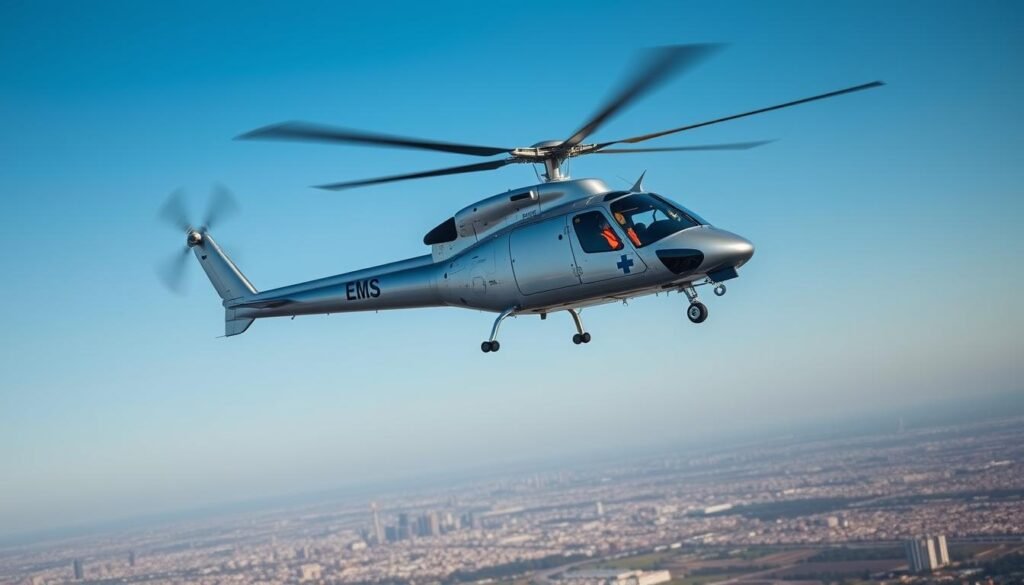
Quality Of Hours: Night, Cross-Country, And Weather Experience
Operators often expect about 1500 total hours, 1000 PIC, and 500 turbine hours, plus substantive night experience (example benchmarks: 100 hours unaided or 50 unaided with 100 NVG aided).
| Focus Area | Benchmark | Why It Matters |
|---|---|---|
| Total Hours | ~1500 | Meets operator and insurance minima |
| PIC & Night | 1000 PIC; night minima per operator | Shows command and low-light competence |
| Turbine Hours | ~500 | Reflects experience in EMS-style aircraft |
Document currency carefully and network with operators. Seasonal months may yield 10–40 flight hours; diversify sources so experience matches emergency conditions and patient-mission demands.
Top companies hiring helicopter pilots often list precise hour and turbine expectations—use those listings to target your training and career moves.
“Real-world turbine time and quality night work build the resilient judgement that air ambulance crews need.”
Career Realities, Costs, And Progression In The EMS Aviation Industry
Upfront expenses and schedule demands are as defining as skill and experience in this field. Training costs include private, instrument, and commercial certificates, checkride fees, and medical exams. Recurring expenses cover currency flights, simulator sessions, and periodic proficiency training.
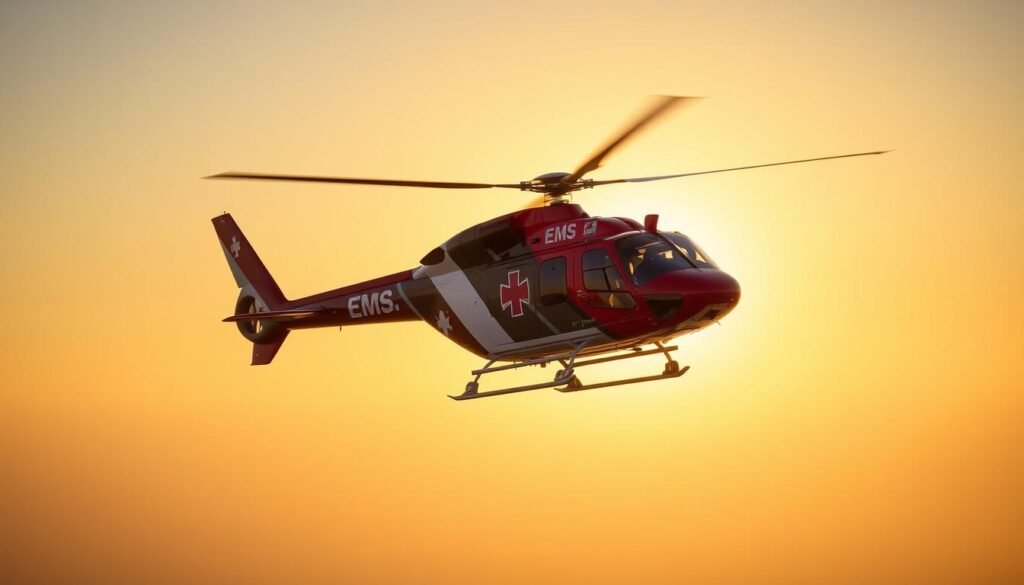
Financial Commitment: Training, Ratings, And Ongoing Currency
Typical outlay for core ratings can run into tens of thousands of dollars. Pilots pay for aircraft time, instructor fees, and testing.
Ongoing costs include FAA medical renewals, instrument currency flights, NVG refreshers, and company recurrent checks.
Schedules, Shifts, And Readiness: Life On Call In EMS
Shifts often run 12 hours for weeklong rotations (0700–1900 or 1900–0700). Pilots stay at base and must launch within minutes when dispatched.
Night tones, single-pilot operations, and high-density-altitude launches add pressure. Crew rest and fitness routines help maintain performance.
Salary, Market Demand, And Regional Opportunities
The median U.S. salary for a full-time ems helicopter pilot sits around $114,000. Pay varies by region, aircraft type, and experience.
Demand favors remote and rural bases that lack fast ground transport. Urban centers may offer slower progression but larger systems.
Continuous Learning, Leadership Paths, And Industry Advancement
Advancement can include Lead Pilot or Assistant Chief Pilot roles and unit development work. Samantha Poirier at REACH Air Medical moved into lead duties and supports county air program growth.
“Maintaining medical currency is not paperwork — it’s part of keeping crew and patients safe.”
Ongoing training includes annual checks, instrument proficiency, NVG currency, SOP updates, and safety management adoption.
Wellness strategies—sleep discipline, strength training, crew debriefs, and peer support—sustain long careers in high-stress operations.
| Area | Typical Cost/Expectation | Impact | Notes |
|---|---|---|---|
| Initial Training | $20k–$70k | Barrier to entry; affects timeline | Private + instrument + commercial fees and aircraft time |
| Currency & Exams | $1k–$5k/year | Keeps legal and safe; required by employers | Medical, recurrent sims, NVG, instrument flights |
| Schedule | 12-hour shifts, week rotations | High readiness; lifestyle trade-offs | Rapid launches; potential for overnight callouts |
| Career Progression | Lead/Chief roles | Higher pay; management duties | Requires experience, leadership training, & networking |
For operational challenges and mission hazards in field work, review detailed accounts of common obstacles at challenges faced in emergency operations.
Conclusion
Success comes from combining medical fitness, structured training, and purposeful flight time. The complete pathway integrates FAA medical clearance, private, instrument, and commercial helicopter training, then focused turbine, night, and cross-country hours that hiring managers require.
Selection hinges on both quantity and quality of experience: IFR proficiency, confined-area work, and calm decision-making under changing weather and mission pressures. Candidates should plan realistic financing, schedule an Aviation Medical Examiner appointment, and target roles that build turbine time and command hours.
For practical next steps, review a detailed career guide and compare training programs at career guide for ems helicopter pilot and explore training cost comparisons at helicopter training cost comparisons.
The payoff is clear: skilled pilots join tight medical teams, launch under pressure, and make measurable differences in patients’ lives while building a resilient, leadership-oriented aviation career.
